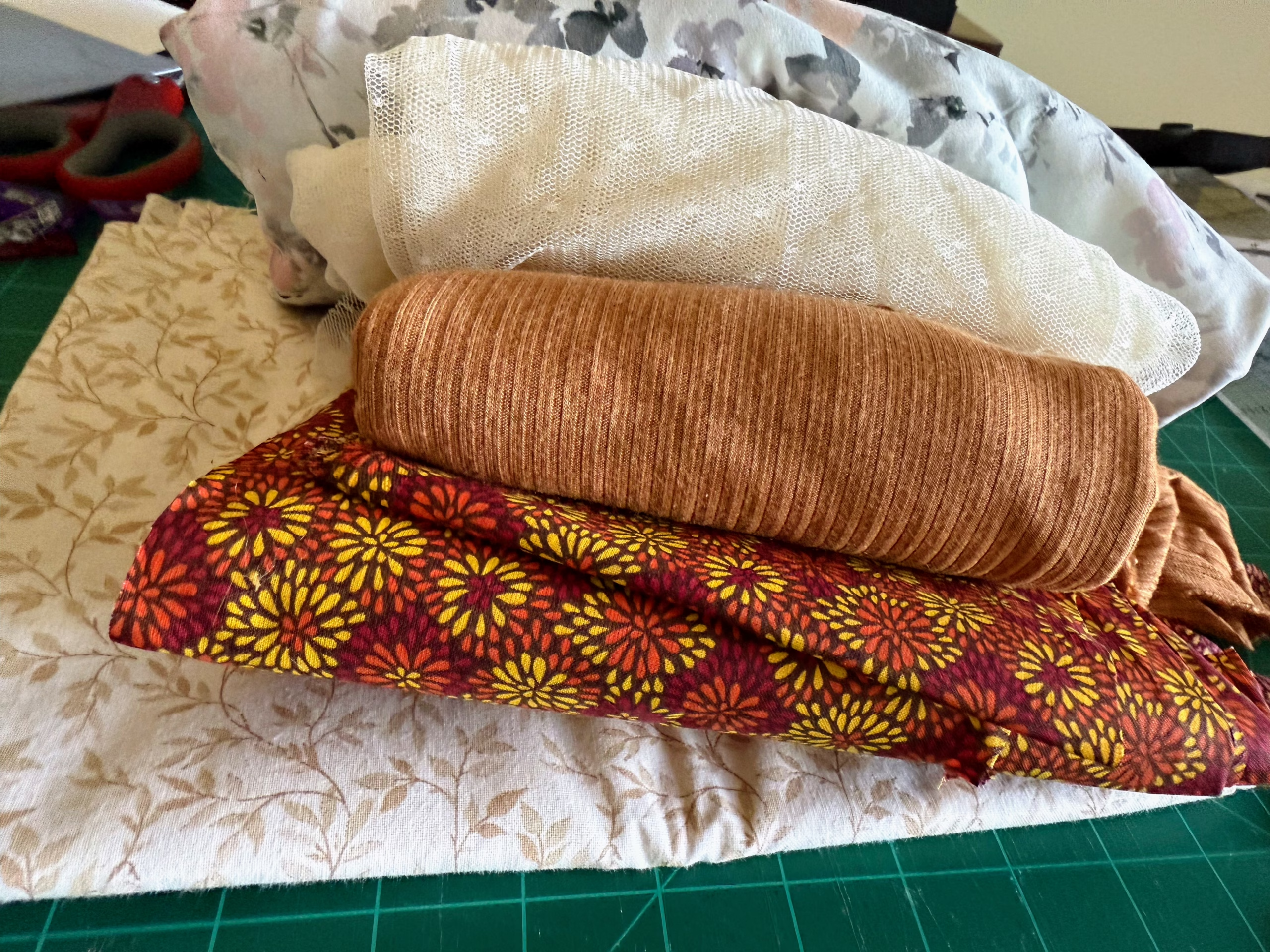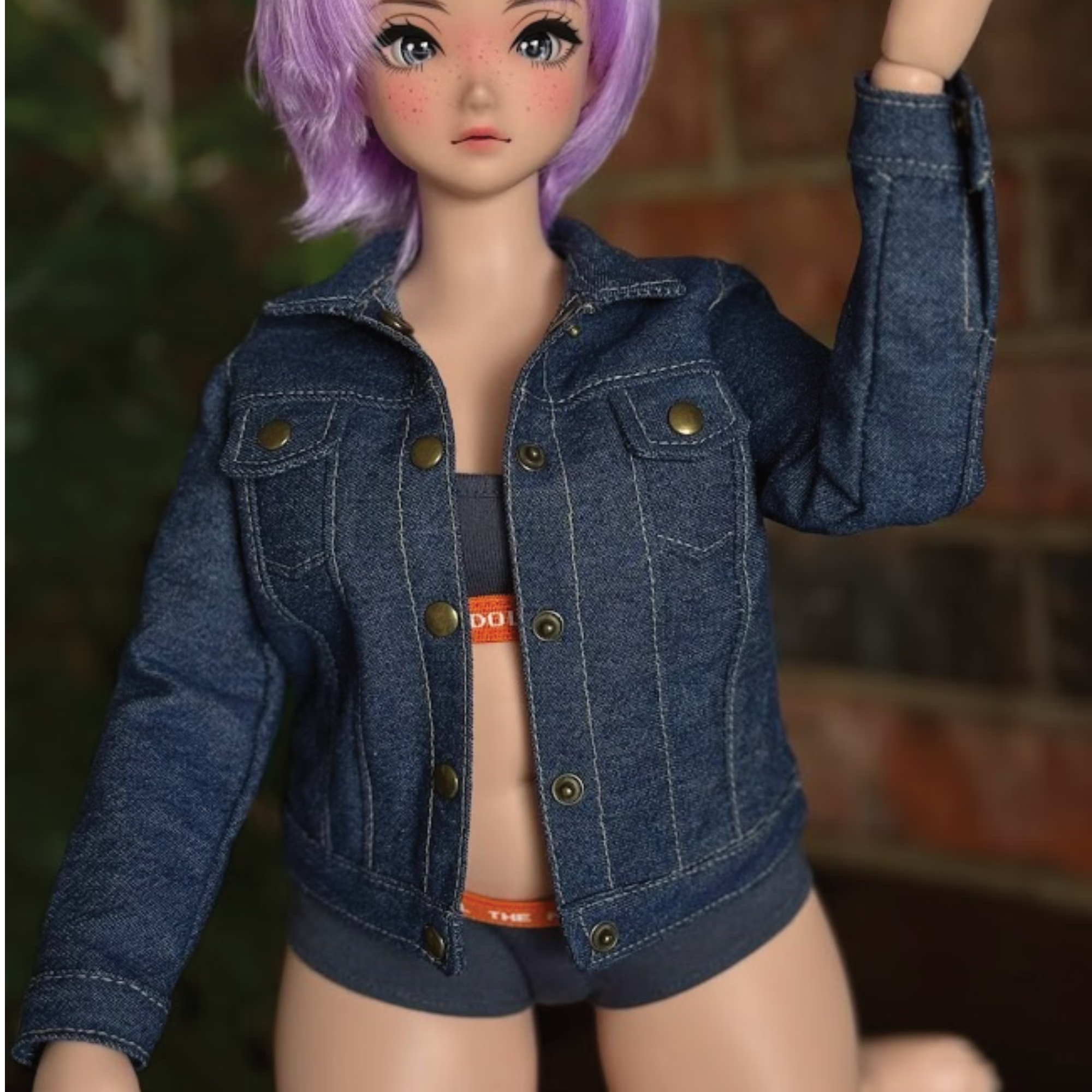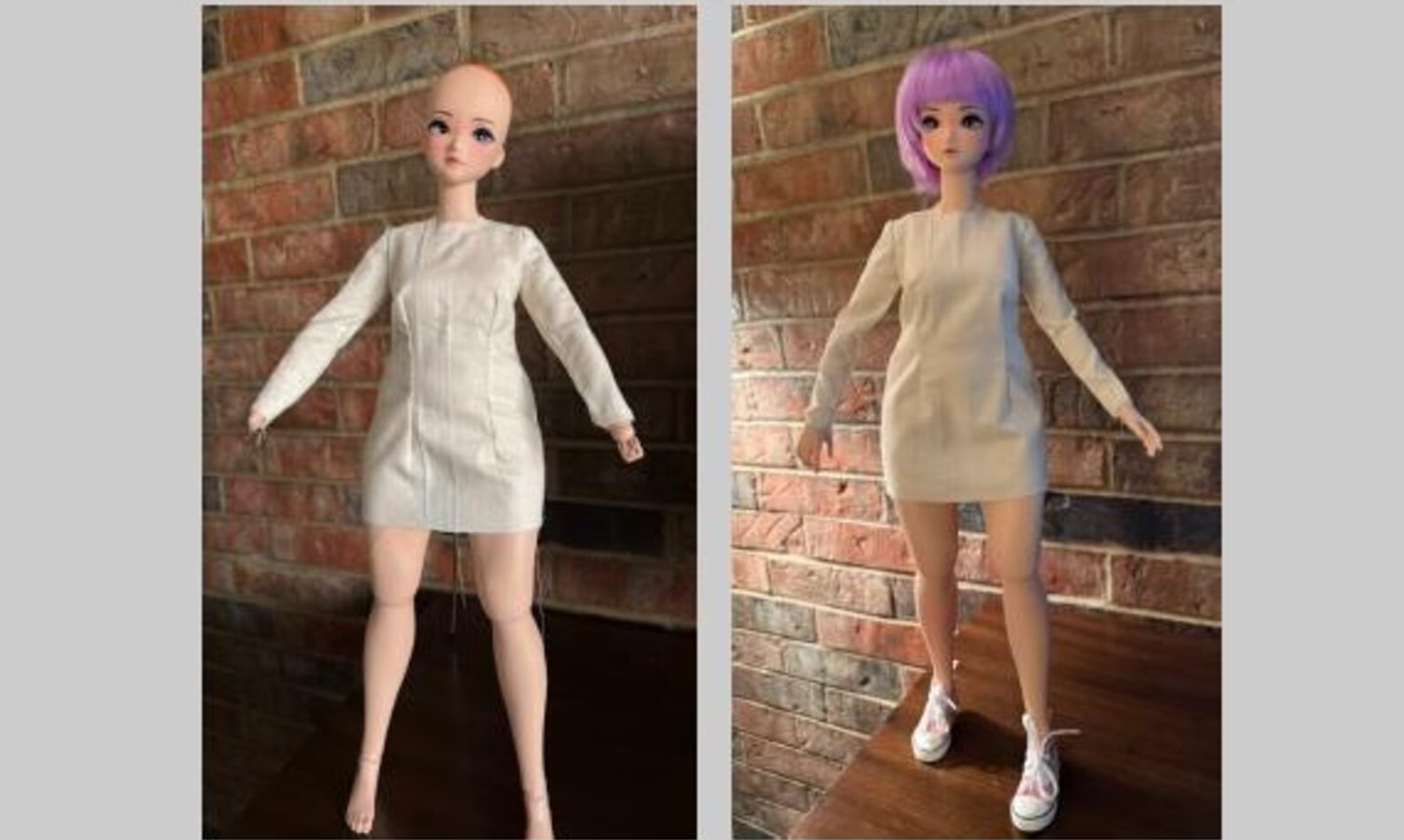Regarding sewing for 1/3-scale dolls and their smaller counterparts, fabric selection is not just a matter of preference but is key to a successful project. It’s essential to choose the right fabrics that drape realistically at a small scale and use appropriate thread and needle types for these fabrics. Let’s explore the best fabric choices for your miniature fashion creations.
The Best Fabric Choices
FABRIC
DRAPE and SCALE
ALTERNATIVES
Cotton Lawn and Cotton Voile
These lightweight cotton fabrics are perfect for their soft drape and fine weave, which scale down beautifully. They are ideal for making summer dresses, blouses, and undergarments.
Easy to cut, sew, and manage, these fabrics are forgiving for beginners.
- Rayon Challis: Available in various vibrant colors and prints.
- Cambric: Also known as batiste, this fabric is lightweight and has a smooth surface.
- Polyester Voile: A synthetic alternative that’s more wrinkle-resistant and durable.
Silk Habotai
This soft and lightweight silk has a luxurious drape that perfectly mimics life-sized garments. It is ideal for elegant gowns and delicate dresses.
Polyester Habotai: This fabric mimics the softness, semi-gloss look, and good drape of silk habotai but is more affordable and machine washable, making it a practical alternative.
Chiffon and Georgette
These lightweight, sheer fabrics are excellent for layering and creating flowy, ethereal pieces. They are perfect for overlay skirts and delicate sleeves.
• Polyester Chiffon: This synthetic alternative is more durable and easier to care for.
• Silk Organza: Slightly stiffer, organza offers a similar sheer and elegant appearance.
• Voile: Suitable for projects that call for chiffon or georgette.
• Rayon Challis: Offers a similar drape and softness.
Wool Felt
Felt is easy to work with and doesn’t fray, making it an excellent choice for outerwear, hats, and accessories. It provides a bit of structure while maintaining a soft feel.
Ideal for beginners still mastering their sewing skills.
Acrylic felt: This synthetic alternative offers similar texture and thickness, making it ideal for projects that require sturdy, non-fraying fabric. It’s also more affordable and widely available at fabric stores.
Additionally, if you need a bit more structure, consider Craft Foam or Interfacing:
Craft Foam: This material provides excellent structure and is easy to cut and shape, perfect for accessories or structured pieces.
Interfacing: Adding interfacing to fabric can give it the rigidity and body of felt without compromising on drape or ease of handling.
Best Choices for Beginners
If you’re new to sewing for dolls, starting with fabrics that are easy to handle is key:
- Cotton Lawn and Voile
- Wool Felt
- Broadcloth
A medium-weight cotton fabric that is easy to handle and sew, great for making simple doll clothes.
Essential Tips for Miniature Sewing
- Scale Consideration: Always consider the scale of the print or texture. Large patterns can overwhelm tiny garments, so opt for small, delicate prints.
- Fine Tools: Use fine pins, sharp scissors, and a small seam ripper. Precision tools help maintain the integrity of small-scale projects.
- Pressing: Pressing seams and hems is crucial for a polished look. A mini-iron can be a handy tool for tiny garments.
Final Thoughts
Sewing for dolls can be a delightful journey of creativity and precision. By choosing the right fabrics and tools, you can create stunning miniature garments that are beautiful and true to scale. Whether you’re a seasoned seamstress or a beginner, tiny fashion is a charming realm to explore.
So, thread your needle, choose your fabric, and let the magic of miniature couture unfold!





Leave a Reply